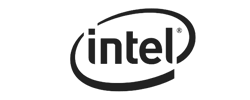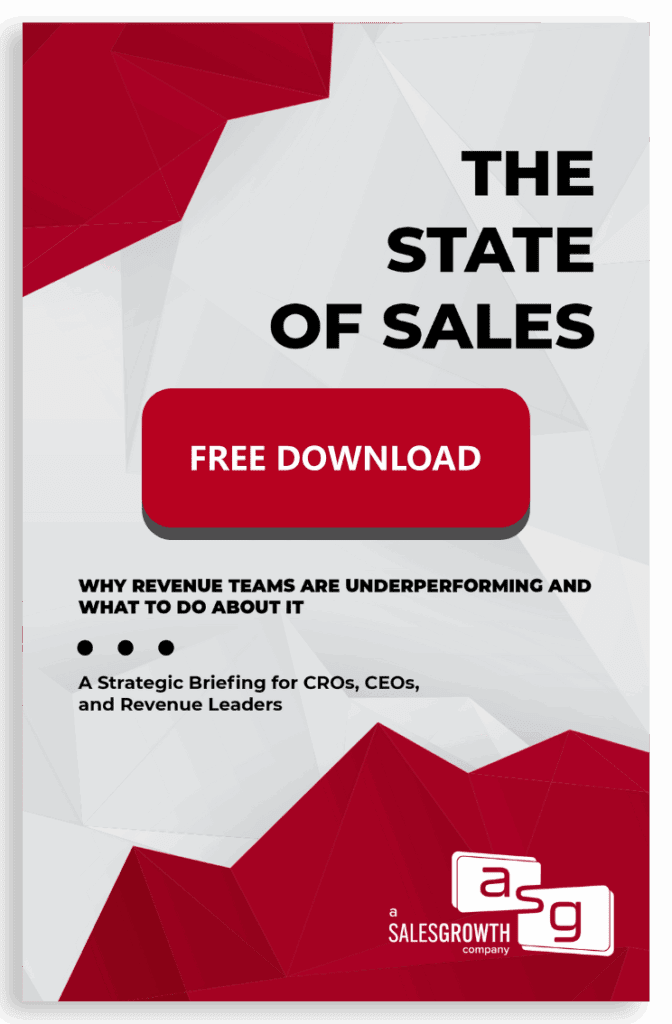A System for Predictable Revenue
A System for Predictable Revenue
People We Work With:
The Problem
Quarter after quarter, the same story plays out. Forecasts look promising, pipelines are full, activity is buzzing. Then the number gets missed.
The typical response is loud but familiar: more enablement sessions, a few new hires, another shiny tool. For a moment, it feels like progress. Then the quarter closes, and the outcomes leadership was chasing haven’t moved.
Why does this keep happening?
Because every fix operates in isolation. Training makes sense on its own. Tools add value in a narrow way. More headcount feels logical. But none of it connects. There’s no system carrying execution from the classroom to the field to the outcomes leadership expects.
That disconnect is why training fades the moment reps face buyers. It’s why tools create activity without impact. It’s why headcount produces more of the same results. And it’s why revenue misses keep repeating no matter how much is spent trying to fix it.
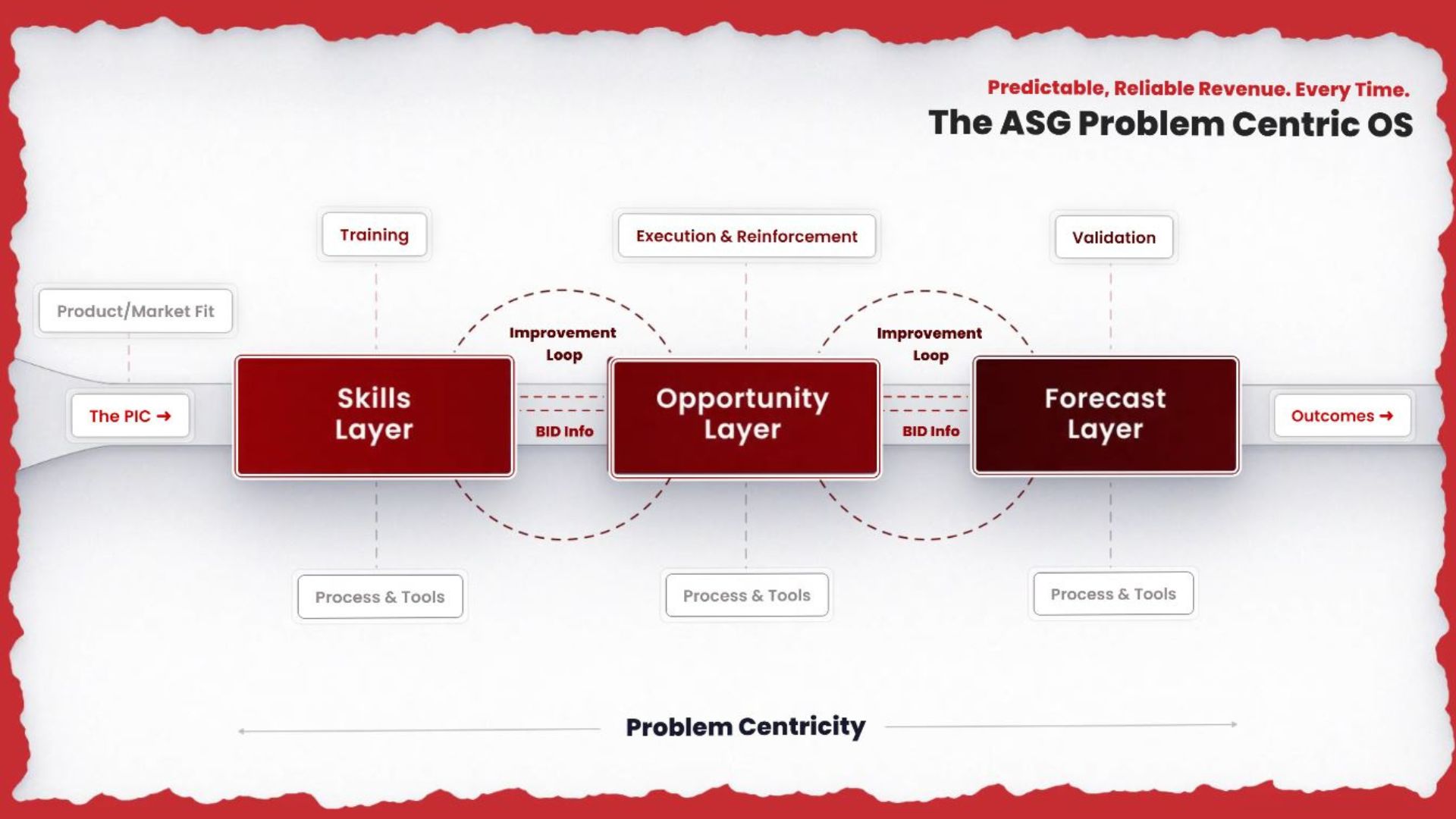
The System: Problem-Centric OS™
This cycle only ends when there’s an operating system to run revenue on. The Problem-Centric OS™ connects the entire go-to-market engine around one standard: the buyer’s problems, their impact, and the root causes behind them. It acts as the logic layer, linking skills, tools, live execution, and forecasting into a single, continuous system.
At the center is the Problem Identification Chart (PIC), which defines the problems your solutions address and creates a common language for every revenue function.
Around it are three layers:
- Skills Layer — where problem-centric behaviors are built.
- Opportunity Layer — where those behaviors are reinforced in live deals.
- Forecast Layer — where only buyer-verified commitments survive.
Buyer Input Data™ (BID) flows through each layer, and the Improvement Loop ensures misses feed back into the system so performance compounds instead of decays.
A connected system that carries execution from training, to the field, to the forecast, and back again — turning every investment into outcomes.
The Foundation: Problem Identification Chart (PIC)
The Problem Identification Chart (PIC) defines the problems you solve, the business impact those problems create, and the root causes behind them. It gives marketing, sales, success, and leadership a shared language for understanding the buyer.
The PIC aligns the entire revenue engine around buyer reality. Marketing can target messages that speak to real problems. Sales can run discovery that uncovers impact and urgency. Managers can review deals using clear, consistent criteria. Customer success can keep accounts focused on solving the business problems they set out to fix.
This is why the PIC sits at the center of the Problem-Centric OS™. It sets the standard every layer of the system builds on, so training, execution, and forecasting all connect back to one truth: the buyer’s problems and the cost of leaving them unsolved.
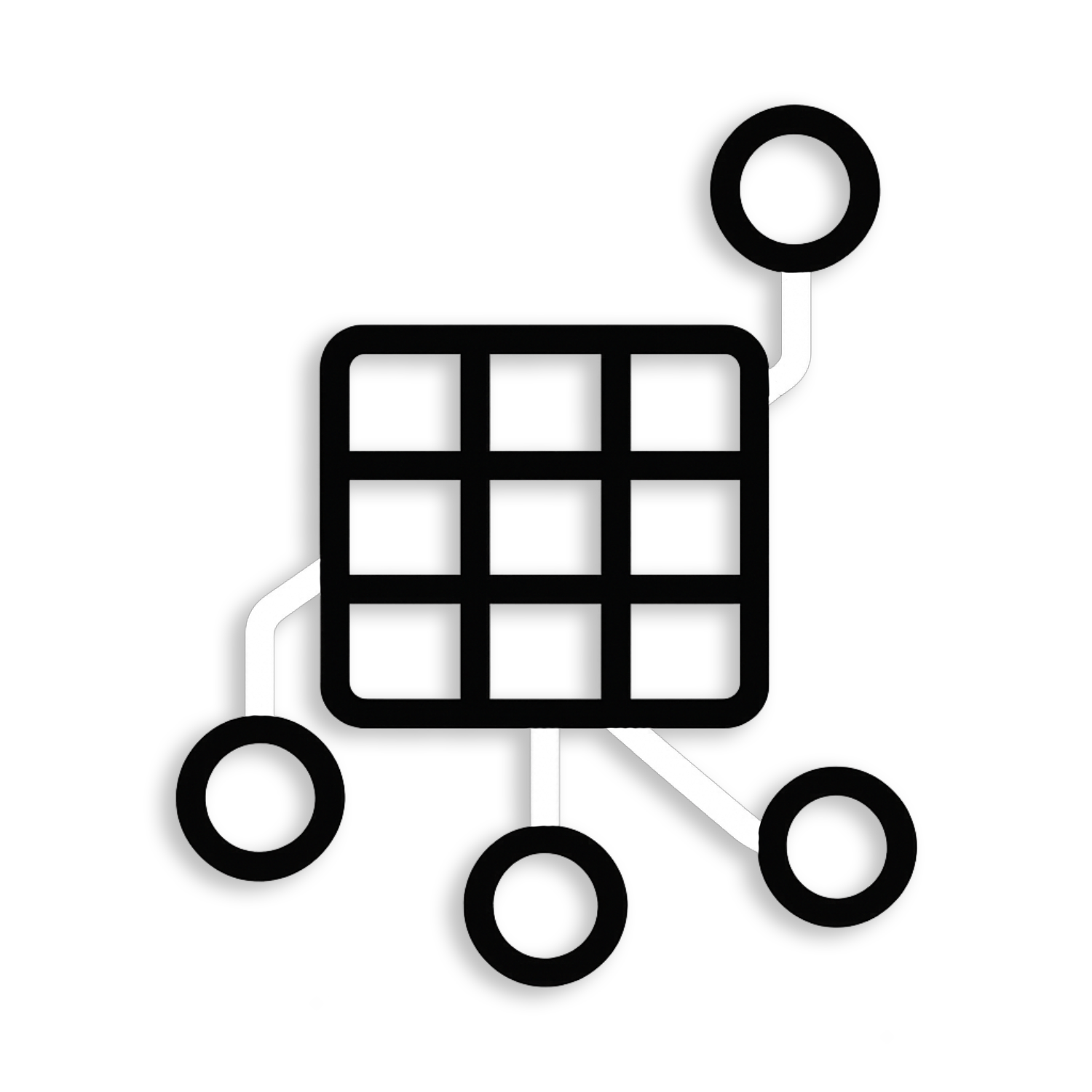
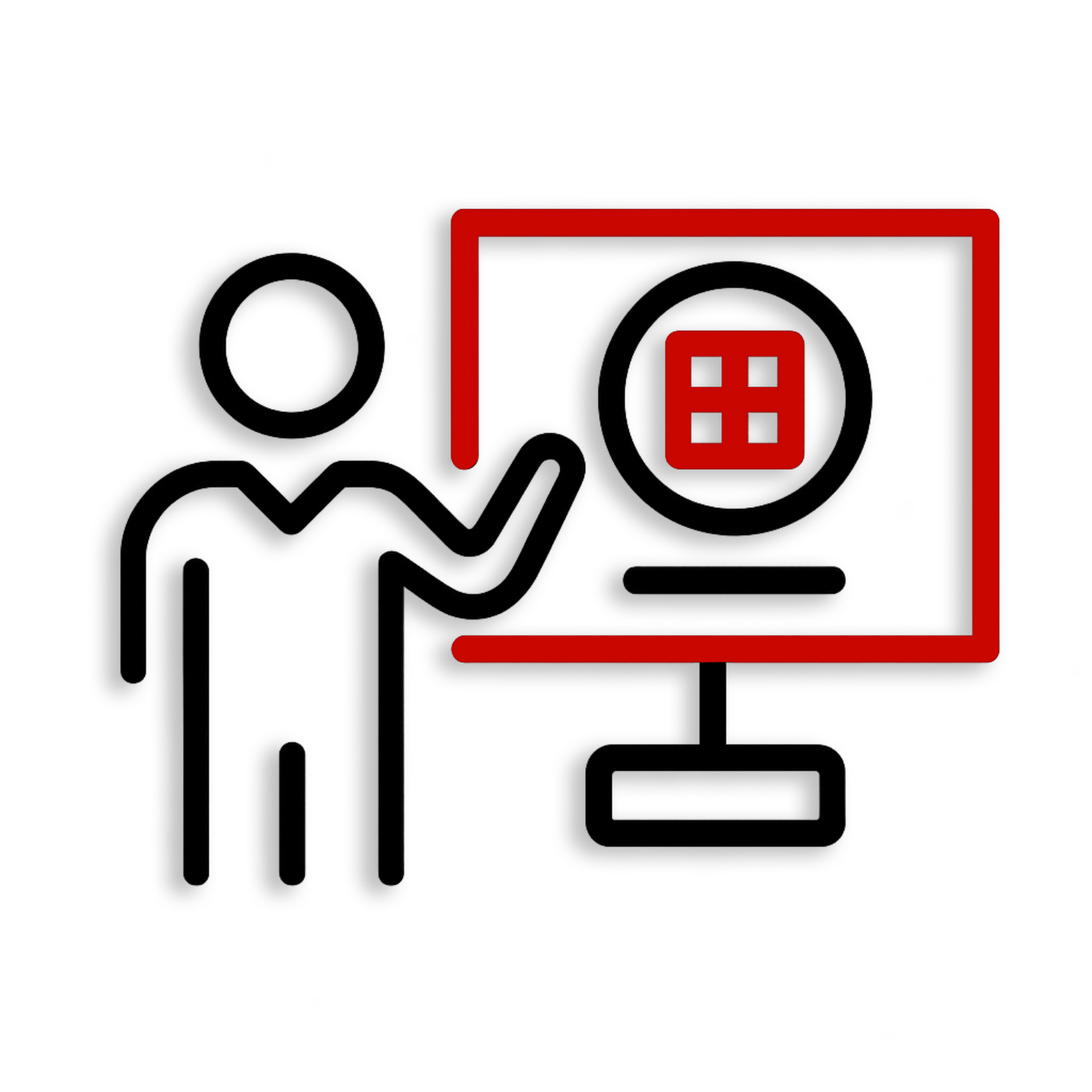
The Skills Layer
The Skills Layer is where problem-centric behaviors are built. It turns the PIC from a framework into habits that show up in every conversation.
Training is the starting point but, not the way it’s historically been run. For years, organizations focused almost exclusively on sales techniques or product knowledge. The Problem-Centric OS™ broadens that scope. Teams are trained on customer problems, sales methods, product in context, market drivers, ICP metrics, business acumen, and the PIC itself. They’re also trained to capture Buyer Input Data™ (BID), the buyer’s own proof that the cost of inaction outweighs the cost of change.
Skills are reinforced by process and tools. Hiring screens for problem-solving ability. Onboarding connects directly to skills instead of product checklists. Certification sets baselines, but never substitutes for outcomes. LMS and AI role play tools make practice continuous and scalable. Gap Up, the AI coaching system built on Gap Selling, pushes improvement further by analyzing live calls and generating targeted coaching plans.
The Skills Layer extends beyond sellers. Gap Prospecting builds stronger entry points. Gap Selling provides the methodology for diagnosing problems and creating urgency. Managers are trained to coach with the ODP model, turning problem-centric behaviors into daily practice. Customer success uses the same system to reduce churn and grow accounts by staying tied to the problems customers care about.
When the Skills Layer is strong, every role: rep, manager, and success leader, operates with the same language, the same standards, and the same expectations. It creates the backbone of execution that the Opportunity and Forecast Layers depend on.
The Opportunity Layer
This is where managers see whether reps can uncover real problems, identify root causes, and show buyers the cost of inaction. It’s also where leaders can measure deal quality using a shared standard. Every opportunity becomes an observable moment, exposing where skills are applied correctly and where they break down.
Processes and tools make this possible:
- Call and video reviews built on clear standards show whether reps diagnose problems and capture Buyer Input Data™.
- Deal reviews and scoring use structured criteria tied to the PIC, creating consistency across the team.
- Deal Quality Assessments and historical scoring define what “good” looks like and link scores to win rates.
- CRM-integrated reviews and tools like Noted Analytics automate BID capture, provide deal scores, and tie inspection directly to outcomes.
- Coaching frameworks like ODP give managers a consistent method for reinforcing skills.
- Rep assessments and scorecards ensure every seller is evaluated against the same problem-centric standards.
- Support tools and dashboards make adoption unavoidable, surfacing the right data and enforcing consistent execution.
The Opportunity Layer is the bridge between skills and outcomes. It reinforces training in real time, exposes gaps quickly, and creates a repeatable system for managing opportunities with discipline.


The Forecast Layer
The Forecast Layer is where leadership validates whether deals are truly ready to close. Numbers at this stage can’t rest on rep confidence or stage progression — they need to be grounded in what the buyer has actually confirmed.
This is where the system applies its final test. Every opportunity that reaches forecast must show clear evidence: the problem has been defined, the root cause is understood, the impact is quantified, and the buyer has admitted the need to act. Without those elements, the deal doesn’t belong in the commit.
Processes and tools enforce this discipline:
- Forecast criteria set the non-negotiable standards for when a deal is forecast-ready.
- The Buyer Confidence Model™ scores opportunities across clarity, control, consensus, and change — the factors that determine whether buyers will actually move.
- Forecast accuracy goals make reliability a performance metric for reps and managers.
- Historical modeling ties today’s pipeline to past outcomes, replacing guesswork with probability.
- CRM dashboards, Clari, and Noted Analytics ensure validation is fast, consistent, and visible across the leadership team.
- Method adherence checks confirm the system has been followed from start to finish, preventing deals that skipped steps from slipping into the forecast.
The Forecast Layer closes the loop. It filters out hope and ensures leadership commits only to opportunities built on buyer-verified proof. When this layer is strong, forecasts stop being an exercise in optimism and start functioning as a reliable view of future revenue.
Buyer Input Data™ and the Improvement Loop
BID runs through every layer of the OS:
- In the Skills Layer, reps are trained to uncover it.
- In the Opportunity Layer, managers inspect it to confirm deals are anchored in buyer-verified problems.
- In the Forecast Layer, it becomes the business case for commitment — no deal is forecast-ready without it.
Without BID, the system fragments. Training doesn’t connect to live deals. Forecasts collapse into guesswork. With BID, every decision is tied to proof that buyers themselves have shared.
The Improvement Loop keeps the OS from breaking down over time. Misses are not ignored; they’re routed back into the system. If a deal fails because of process, it’s pushed back to the Opportunity Layer for correction. If it fails because of skills, it goes back to the Skills Layer for retraining. Forecast accuracy feeds into both, sharpening the system with each cycle.
Together, BID and the Improvement Loop ensure the OS compounds over time. Every deal, every inspection, and every forecast strengthens the next cycle — turning revenue performance into something that improves quarter after quarter

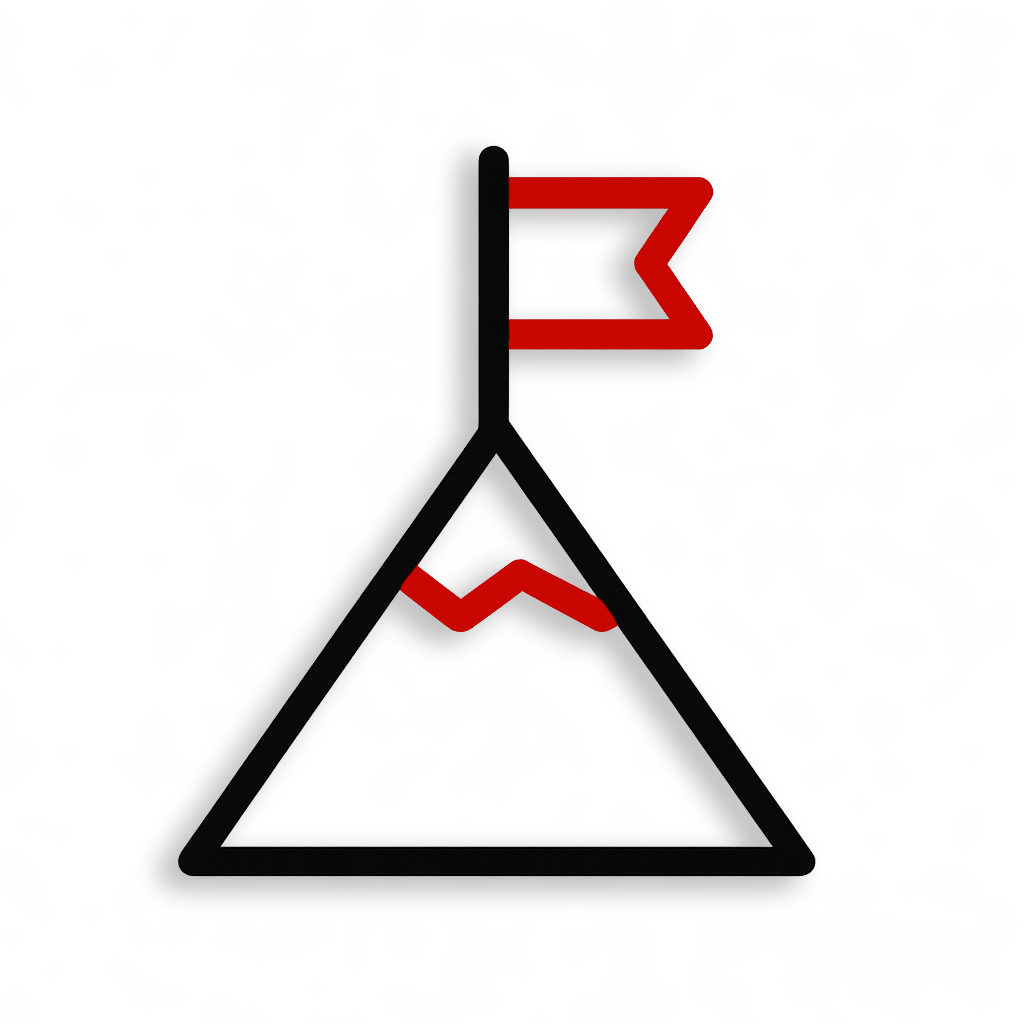
Outcomes
The Problem-Centric OS™ connects execution to measurable results.
Win Rates
Win rates rise as weak opportunities are filtered out early, reps consistently uncover problems and impact, managers reinforce those behaviors in live deals, and forecasts enforce buyer-verified standards.
Sales Cycles
Cycles shorten when reps expose the cost of inaction during discovery, managers coach against observable moments in live opportunities, and buyers commit earlier because urgency is clear.
Contract Values
Average deal size grows as reps diagnose the full business problem, tie it to quantified impact, and expand scope across stakeholders — giving them the leverage to defend price and justify larger investments.
Customer Acquisition Cost (CAC)
CAC falls as better qualification reduces wasted spend, conversion rates improve at each stage, and more revenue is generated without adding disproportionate sales and marketing expense.
Forecast Accuracy
Forecasts become reliable because every committed deal passes through BID, structured criteria, and the Buyer Confidence Model™ — ensuring leadership only commits to opportunities backed by buyer proof.
Growth
Growth scales predictably as each cycle of skills, opportunity management, and forecasting feeds into the Improvement Loop, turning misses into inputs and compounding performance quarter after quarter.
When Every Fix Fails, It’s Time for a System
Let’s talk about how the Problem Centric™ OS can drive predictable growth in your organization.

